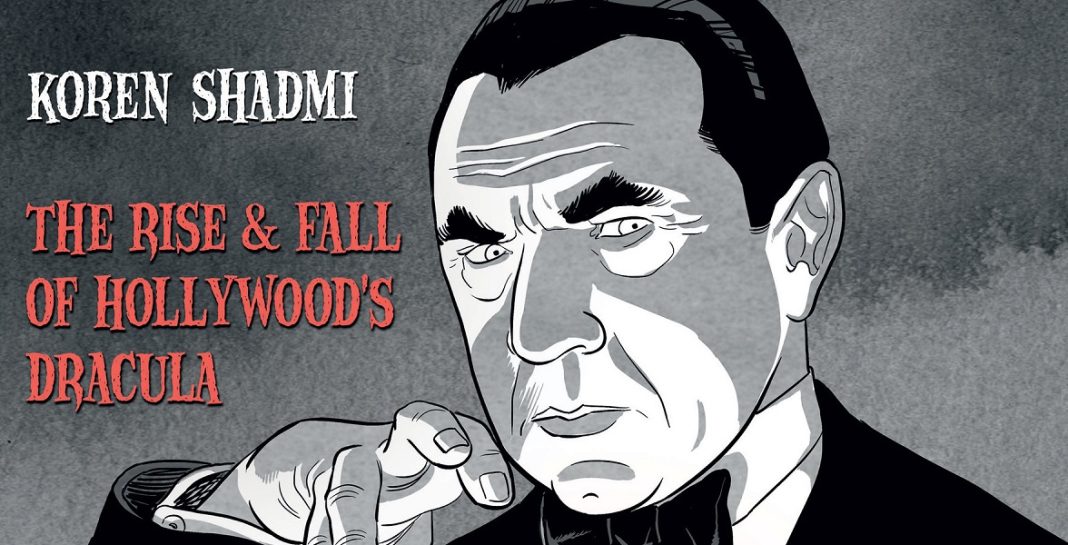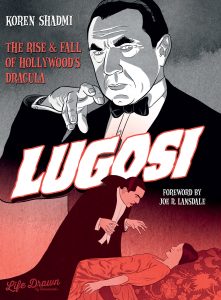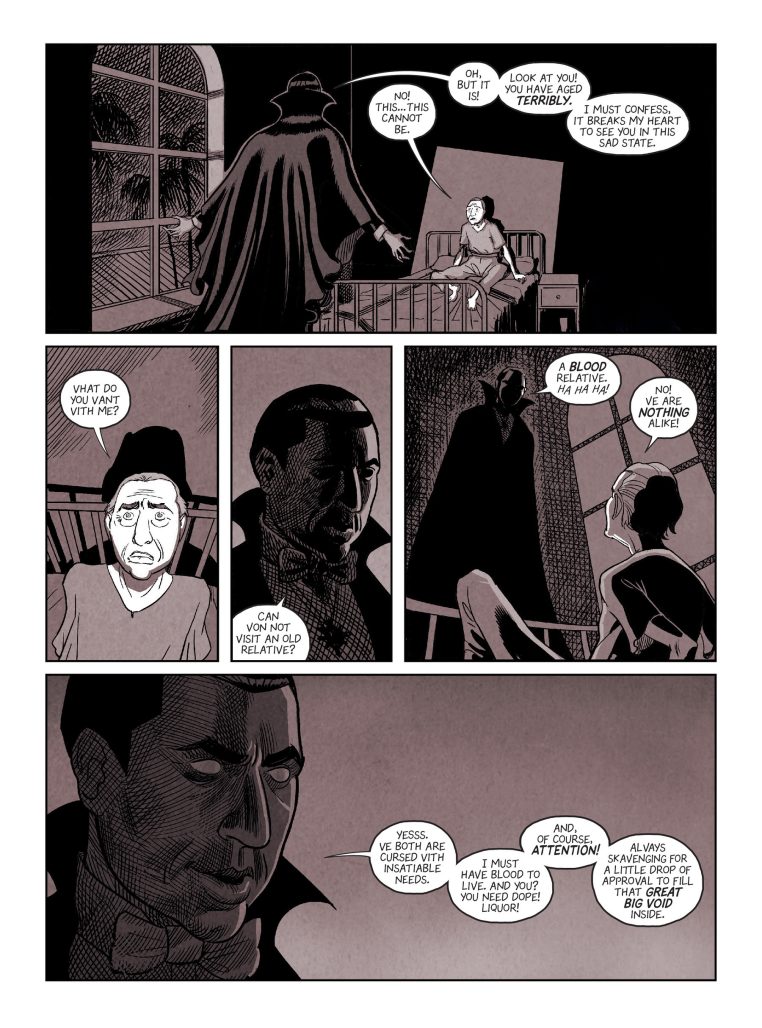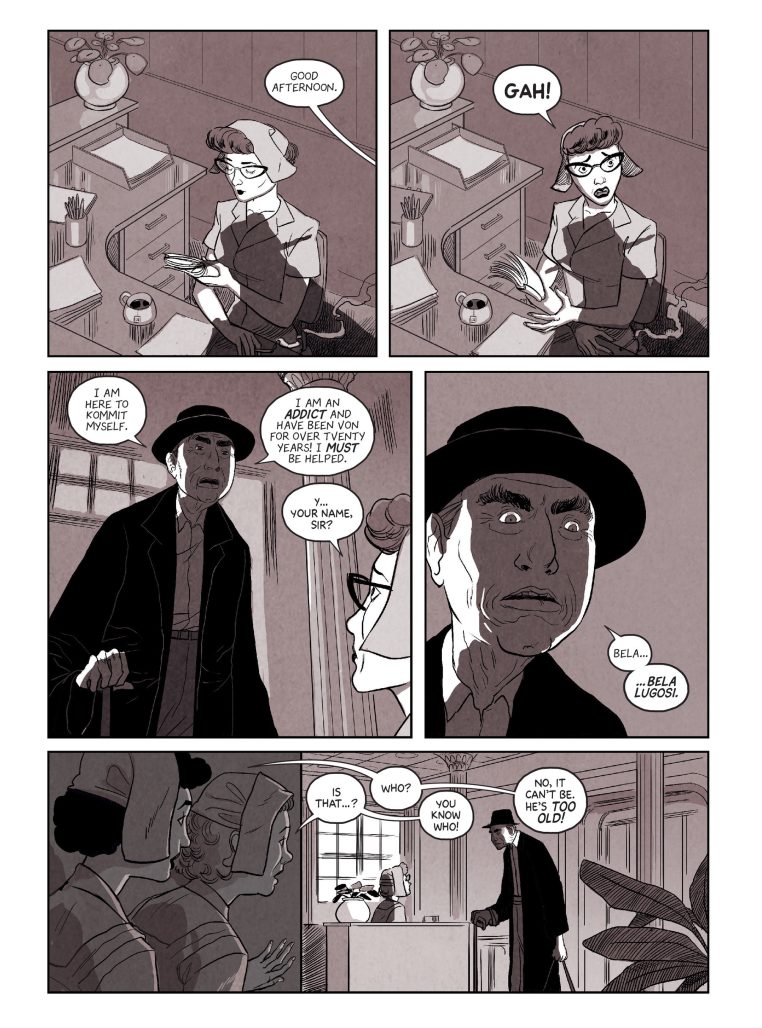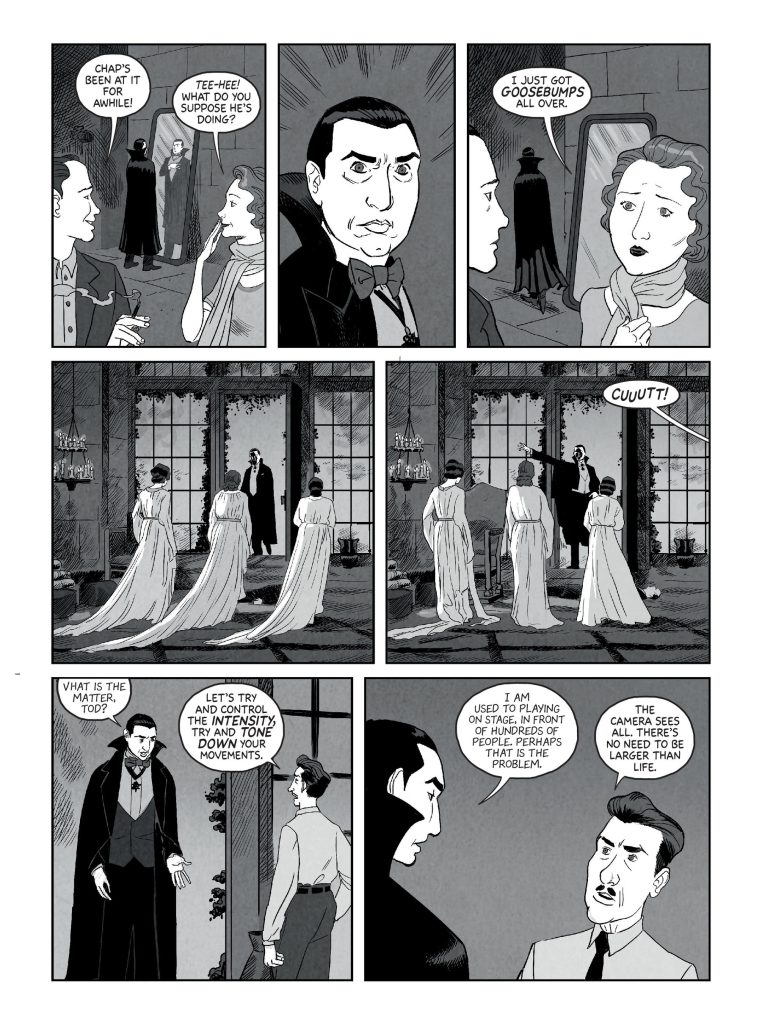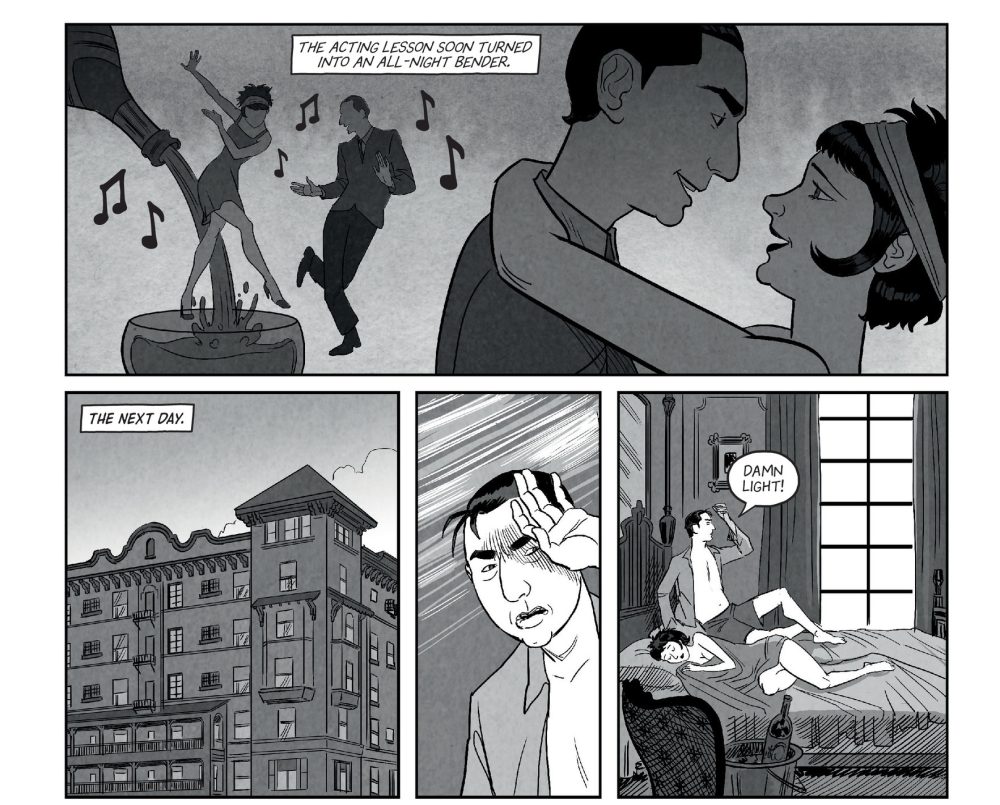 Lugosi – The Rise and Fall of Hollywood’s Dracula
Lugosi – The Rise and Fall of Hollywood’s Dracula
Creator: Koren Shadmi
Publisher: Humanoids
Publication Date: January 17, 2023
Bela Lugosi is not simply Hollywood’s Dracula, but is perhaps the one and only Dracula as far as the general public is concerned. What often does not get enough attention is that Bram Stoker’s original novel differs largely from film versions not only in how the story is told, but specifically in how Dracula himself is said to look and make you feel. The appearance of Dracula in the public consciousness — the outfit, the dramatic gestures, the suave approachability — stem almost entirely from Bela Lugosi’s work. He set the tone, and a majority of Dracula’s films build off the foundations set by Lugosi in his early work. I would argue you almost can’t go back anymore. We’ve certainly tried to shake up the formula, but Lugosi is effectively shorthand for Dracula himself.
In his biography, Lugosi: The Rise and Fall of Hollywood’s Dracula, cartoonist Karen Shadmi makes a compelling case that perhaps this impact is due to not only Lugosi’s work on camera, but also how he embodied the gravitas of the character off camera. Spanning Lugosi’s entire life, this graphic novel attempts to get at the man through the character by helping us understand his magnetic charm, admirable rise to stardom, and ultimately his self-destructive, insatiable appetite that becomes his downfall. To know Dracula today seems to be synonymous with knowing Lugosi, and equally to know Lugosi is to know Dracula.
Shadmi frames the story from the perspective of an older, world-weary Lugosi who checks himself into a rehabilitation clinic. As we’re introduced to Lugosi, the art choices are deliberately blurring the line between the man and the character with heavy, lingering shadows, and a clocked, black figure that stands out from those around him. Lugosi’s facial expressions are similarly dramatic, exaggerated to demonstrate his stage presence that he never seemed to turn off. Lugosi puts on a show wherever he goes, and Shadmi excels at portraying this larger than life persona.
From here, as we learn about Lugosi’s life, the two points in time are color-coded with a straightforward monochrome for the flashbacks, and graytones present in the elderly Lugosi’s framing of the story. As we see Lugosi struggle with addiction, haunted by his choices and his own alter ego, the coloring adds a hint of nostalgia. Lugosi coming to prominence is not always the kindest story to relay, so it helps here to see him both self-reflectively but also visually rendered with empathy. This is a man that radiates melodrama, and the subtle distinction here makes for both a smooth reading experience but also is representative of the choice to show Lugosi not just as a subject of study, but as a whole person in a state of contemplation.
That said, Shadmi is strongest in his ability to capture the exaggerated and cinematic quality of Lugosi’s body language. Coming from a theater background, Lugosi stands out among the more subdued film actors on set.
Not only do we see here the re-creation of the set and lighting with great linework and shading. But we also see how Lugosi as a performer breaks the normalcy with intense looks and movement. There’s a level of physicality to his Dracula that was unconventional but became a mainstay of our concept of Dracula henceforth. The choices here of breaking up stiff movements with dramatic shifts in Lugosi’s position really helps to recreate in panels how Lugosi felt on camera.
The acting of other characters in Lugosi’s life is also wonderfully expressive. We see all kinds of love affairs, Hollywood producers, and innocent bystanders that have different relationships to Lugosi the man and Dracula the character that enhance our understanding of why this actor’s portrayal has endured for nearly 100 years.
Perhaps the most challenging part of the story to do well, in my opinion, is the choice to recreate iconic shots from Lugosi’ filmography. The difficulty here is how does one manage to preserve the visual language already established within the comic with a faithful, recognizable rendition of the cinematic shot? On top of that, how does one do that in a sequential manner that isn’t merely storyboards, but has a genuine flow inherent to the comic?
I think what Shadmi is able to accomplish here is some of the best evidence of his talents as a cartoonist. The choices are subtle but impactful in how actors are rendered with a bit more detail but never outside of the character models that have so far been established. Blacks are used in much heavier doses, giving the recreated film shots a gentle break with the rest of the established story so we can immediately identify the film and then jump back to reality without any delay or visual confusion. Shadmi also picks specific sequences or identifies movements within the film that intuitively are better suited to a comic. These are not long, drawn out recreations of a film’s pace. They are simply renditions of the same events effectively trimmed and tailored to fit inside a few panels.
What I like most about this approach is that there’s numerous visual differences to help us identify Lugosi at all stages of his life. We see him young, old, on camera, on set but off camera, his own psychological manifestation of himself and him trying to be cinematic in regular life. Each time, his face is detailed or colored slightly differently to give us a sense of all sides of the man, and helps us appreciate his talents as an actor and why he’s such a strong subject for a comic where minor visual ticks can have massive implications. You could almost argue this book is as much a study and exercise for Shadmi as it is as a biography in its own right.
Lugosi: The Rise and Fall of Hollywood’s Dracula is an excellent biography. We learn a great deal about the life and personality of Lugosi but we’re also treated to strong cartooning and fascinating artistic choices that are worth closer examination. Shadmi is able to do a lot with very little, understanding how a reader’s initiative experience can be guided and molded for powerful storytelling choices. This is a great buy not only for horror and Hollywood fans, but also artists and comics fans at large that want to see an excellent showcase of the form.
Check The Beat’s review section for a new graphic novel review every Friday in 2023!
Lugosi – The Rise and Fall of Hollywood’s Dracula is available now!


